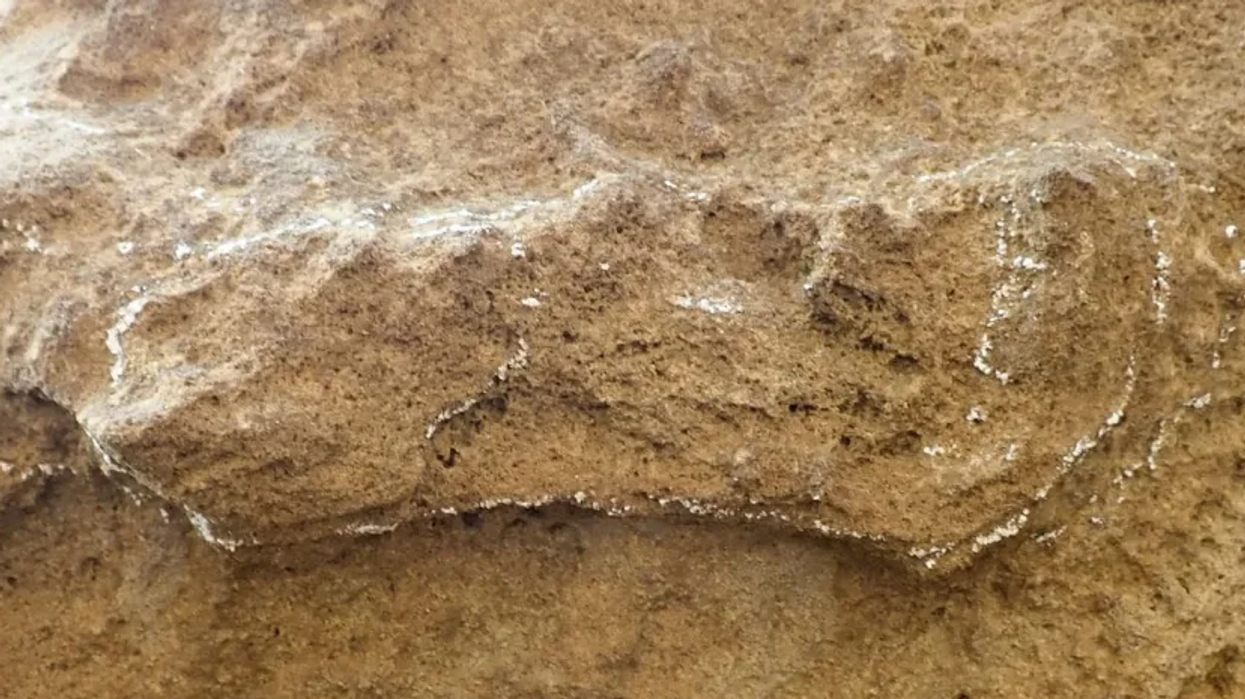Catherine Shuttleworth
Oct 29, 2024

148,000-year-old discovery suggests humans wore modern everyday item back then
Charles Heim
A new analysis of ancient footprints in South Africa suggests that humans may have been wearing hard-soled sandals.
The well-preserved prints’ unusual characteristics may provide the oldest evidence so far that people used shoes to protect their feet from sharp rocks during the Middle Stone Age. Although researchers are hesitant to come to firm conclusions related to the use of footwear during the period.
The authors of the study examined markings that had been left on stone slabs at three different locations on the Cape coast, none of which have been directly dated. However, based on the age of other nearby rocks and sediments, researchers believe that the tracks found at a site called Kleinkrantz could be between 79,000 and 148,000 years old.
The footprints show no toes, discerning it from barefoot markings, and instead displayed “rounded anterior ends, crisp margins, and possible evidence of strap attachment points.’ Similar markings that are estimated to have been left between 73,000 and 136,000 years ago were located at a site called Goukamma.
The study authors wrote: “In all cases the purported tracks have dimensions that are broadly consistent with those of hominin tracks.” They added that the “track sizes appear to correspond to the tracks either of juvenile track-makers, or else small-adult hominin track-makers.”
As a method of testing their conclusion, researchers made their own footprints wearing sandals resembling two different pairs of shoes used historically by the Indigenous San people of Southern Africa. Both pairs that researchers based their sandals off of are currently housed in museums.
Their research showed that the use of hard-soled footwear on wet sand left prints just like the markings at Kleinkrantz. There were crisp edges, no toe prints, and indentations of where leather straps met the sole.
“While we do not consider the evidence conclusive, we interpret the three sites […] as suggesting the presence of shod-hominin track-makers using hard-soled sandals,” write the researchers.
The researchers go on to offer a possible explanation for use of such footwear: “In the [Middle Stone Age], a significant foot laceration might have been a death sentence,” making sandals a lifesaver.
Despite their promising findings, researchers are reluctant to make any bold claims. This is due to a variety of factors, such as the difficulty of interpreting rock markings, as well as the fact no actual shoes from the Middle Stone Age have ever been found.
As such, they refrain from making major claims about their findings, but speculate that “humans may have indeed worn footwear while traversing dune surfaces during the Middle Stone Age.”
The study is published in the journal Ichnos.
Sign up to our free Indy100 weekly newsletter
Have your say in our news democracy. Click the upvote icon at the top of the page to help raise this article through the indy100 rankings.
Top 100
The Conversation (0)













